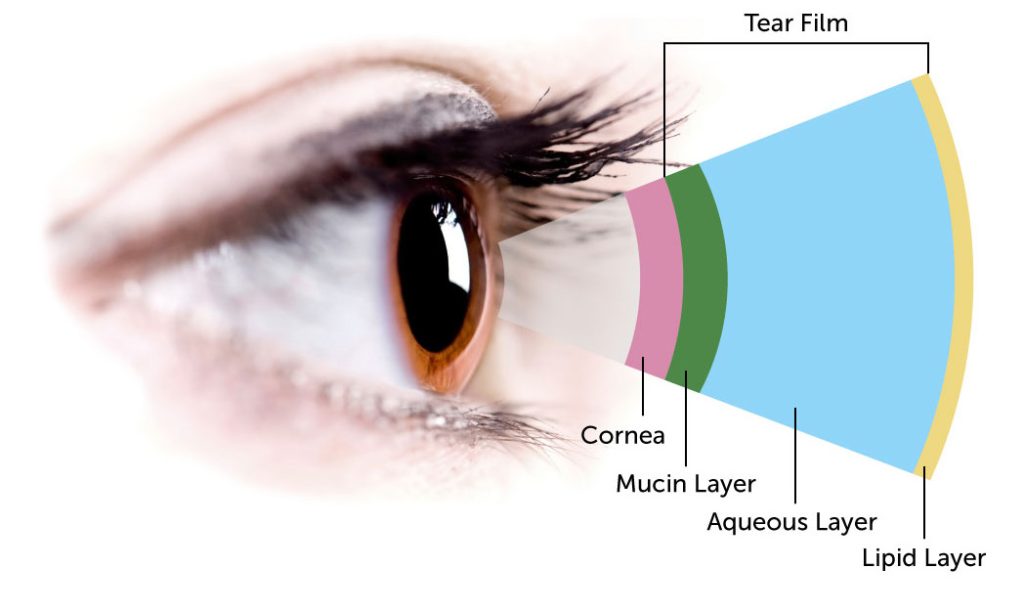Do your eyes often feel dry, irritated, and itchy? If so, you may be one of the millions of people around the world that suffer from dry eye. The long-term, chronic disease takes years to develop and can worsen if left untreated. But what exactly is dry eye, and how do you know if you have it? At Black Hills Regional Eye Institute’s Dry Eye Clinic, we’re here to help you stay informed about dry eye and assist you in taking the steps you need to alleviate symptoms and protect your eye health.
What is Dry Eye?
People with dry eyes either do not produce enough tears or produce tears of poor quality, resulting in eyes that are unable to stay properly moisturized. In addition to providing lubrication, tears also reduce the risk of eye infection, wash away foreign matter that is in the eye, and keep the surface of the eyes smooth and clear.
There are two types of Dry Eye:
Evaporative Dry Eye. This type accounts for around 86% of all dry eye cases and is caused by blockages in the Meibomian glands in your eyelids. These glands are responsible for creating the lipid (oil) layer of tears. When the glands aren’t working as they should, you don’t have enough tear film oil and your tears evaporate 4-16 times faster.
Aqueous Deficient Dry Eye. This type occurs when the lacrimal glands do not create a sufficient amount of water to keep the eyes moist.
What Causes Dry Eye?
Dry eye is a complex, multifactorial disease that occurs when tear production and drainage are not in balance. There are many things that can cause dry eye, including:
- Dry eye is common in people over the age of 65, making it a part of the natural aging process.
- Women are more likely to develop dry eyes due to hormonal changes that are caused by pregnancy, the use of oral contraceptives, and menopause.
- Medical conditions. People with rheumatoid arthritis, diabetes, and thyroid problems are more likely to have symptoms of dry eye. Those that suffer from blepharitis (inflammation of the eyelids), inflammation on the surfaces of the eye, or inward or outward turning eyelids can also develop dry eyes.
- Certain medications, such as antihistamines, decongestants, blood pressure medications, and antidepressants can reduce tear production.
- Environmental conditions. Exposure to smoke, wind and dry climates increase tear evaporation and can result in dry eye symptoms. Failure to blink regularly, which often happens when staring at a computer screen for long periods of time, also contributes to drying of the eyes.
- Other factors. Long term use of contacts and certain eye surgeries can also be a factor in the development of dry eyes.
What Are the Symptoms of Dry Eye?
The symptoms of dry eye include:
- Dryness
- Discomfort and irritation
- Grittiness or the feeling of a foreign substance in the eye
- Burning or stinging sensation
- Tearing
- Redness
- Discharge
- Tiredness
- Itchiness
- Vision disturbance
- Sensitivity to light
How Do I Know If I Have Dry Eye?
If you regularly suffer from the above symptoms of dry eye, it is recommended to visit our Dry Eye clinic, where we will conduct a series of evaluations to determine the likely cause(s) of your dry eye symptoms.
What Is the Treatment for Dry Eye?
Dry eye is not something that can be cured simply by heading to the store and stocking up on artificial tears. Although artificial tears do comprise a portion of treatment, ongoing management to treat the underlying cause of dryness is critical.
Our skilled team provides a variety of dry eye treatments, which include:
- Therapy
- Blinking instructions
- Drops and medications
- Treatments such as BlephEx, LipiFlow Thermal Pulsation System, and Intense Pulsed Light (IPL)
Are you ready to benefit from our dry eye treatment and take charge of your eye health? Schedule an evaluation with our Dry Eye Clinic today!


